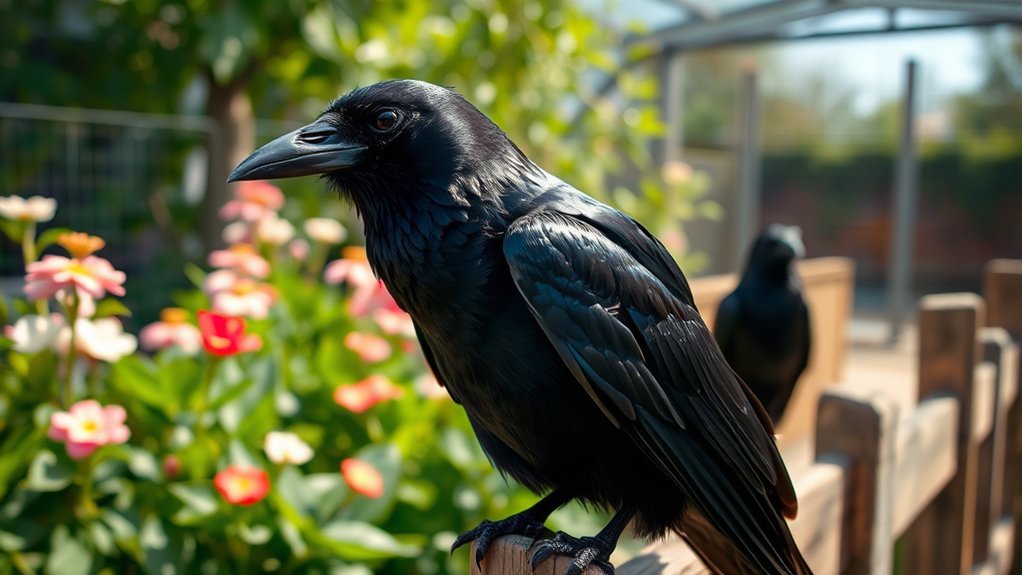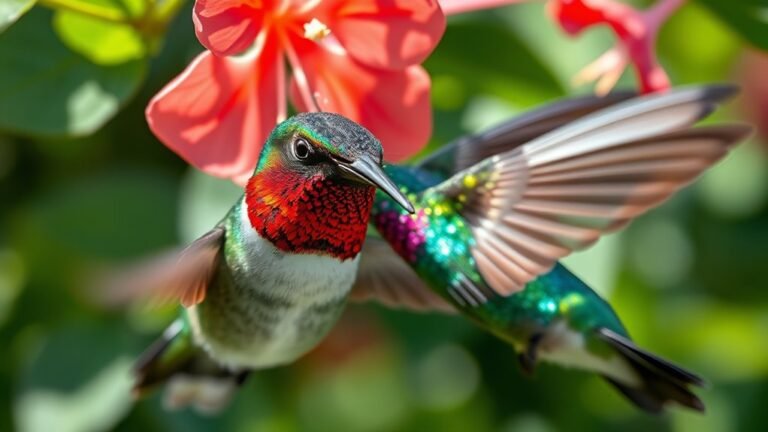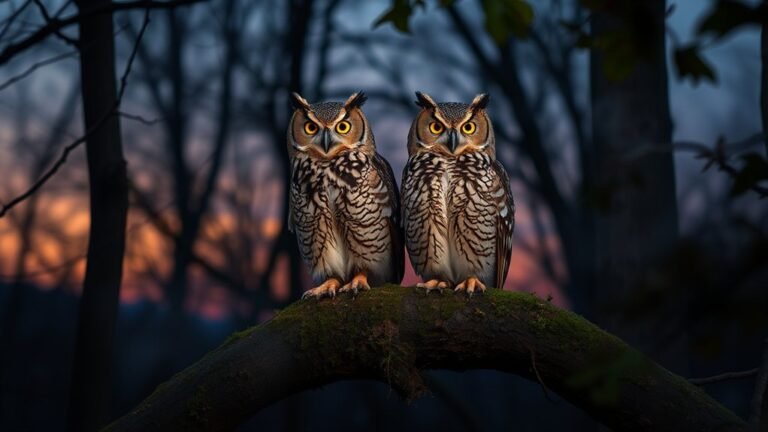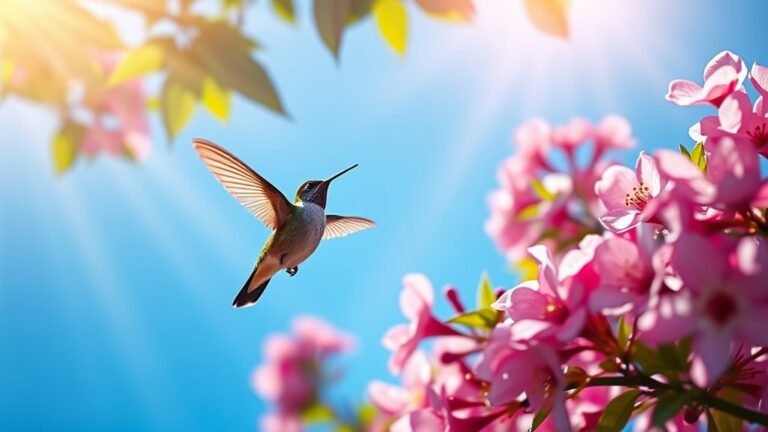How Long Do Crows Live? Facts and Insights
Crows can live for a long time, and it's interesting to learn how their lives work. In the wild, crows usually live about 10 to 15 years. But when they are kept in captivity, they can live much longer.
Many things help crows live longer. Their diet, health, and how they get along with other crows all play a big part. Good food keeps them strong. Staying healthy means they fight off sickness better. And being social helps them feel happy and safe.
So, the way crows eat, stay healthy, and live together really matters. Do you want to learn more about how these things help crows live longer lives?
A Quick Overview
Crows usually live between 10 and 15 years in the wild. Sometimes, they can live up to 20 years if conditions are really good.
In places like zoos, crows can live even longer, often over 20 years. This is because they don't face the same dangers and always have food to eat.
Several things can affect how long crows live. Their diet, whether they have predators around, and their environment all play a big role.
Crows with strong family bonds and a mix of different genes tend to live longer and are healthier.
However, living in cities can be tough for crows. They face health risks, so it's important for them to find clean food and water to stay well.
Overall, crows are smart birds, and taking care of their environment helps them live longer, happier lives!
Overview of Crow Lifespan

Crows usually live for 10 to 15 years in the wild. Sometimes, if everything goes well, they can live up to 20 years. Their lifespan shows how they behave and reproduce.
Crows are very social birds. They often live in family groups and work together to take care of their young. This teamwork helps them find food and protect their homes better.
When crows raise more babies successfully, it helps their group grow. A bigger group means more help for finding food and keeping safe.
Watching how crows live and work with each other can teach us a lot. It shows how smart and strong these birds are, and how they adapt to different places.
Crows are truly amazing!
Average Lifespan in the Wild

Crows can live a long time in the wild! Their average lifespan is usually between 10 to 15 years. That's pretty impressive for a bird.
Crows are smart and adaptable creatures. They've interesting behaviors and form close groups with other crows.
These groups help them survive. Crows share important information about food and dangers. This teamwork makes it easier for them to stay safe and find food. They're also great problem solvers and can use tools to reach food that might be hard to get to.
But, crows face challenges, too. Things like losing their homes, getting hunted by other animals, or not having enough food can shorten their lives.
Understanding these challenges highlights how strong and clever crows are, helping them live longer in the wild.
Lifespan of Crows in Captivity

Crows can live for about 15 years in the wild, but they can live much longer in captivity. In a good environment, crows can live 20 years or more.
To keep crows happy and healthy, it's important to give them fun things to do. You can put toys and different types of perches in their space. This helps keep their minds busy.
When crows get to play and explore, they stay active and feel good. Spending time with your crow helps build a strong bond between you both.
A safe and interesting home reduces stress for the bird. This allows them to act naturally and live longer. By understanding what crows need, you can support their health and happiness.
Crows are fascinating birds, and taking care of them can be a rewarding experience.
Factors Influencing Lifespan
Crows have different lifespans in the wild and in captivity, and several things affect how long they live. In the wild, having a mix of different genes helps crows survive. When there are many different kinds of crows, they can better handle changes in their environment. For example, tough winters can make it hard to find food, which can hurt their health and shorten their lives.
In captivity, crows often live longer because there are fewer predators and food is always available. However, if all the crows are closely related, they might've problems from inbreeding.
Social interactions are important too. Whether in the wild or in captivity, being with other crows affects their happiness, which is a key part of living a long life.
Understanding what affects a crow's lifespan helps us appreciate these amazing birds. It also reminds us how crucial it's to protect their homes and keep their gene pool healthy.
Diet and Nutrition
Crows eat a wide variety of foods that help keep them healthy and strong. Their eating habits help them find the nutrition they need.
Here's what crows usually eat:
- Insects – Crows like to eat bugs. These are important for getting protein, especially when they've babies.
- Fruits and Seeds – Crows enjoy tasty fruits like berries and nuts. Seeds are also a big part of their meal. These foods give them energy.
- Leftovers and Carrion – Crows will eat anything they find. They often scavenge for animal remains or leftovers from people. This helps them survive in many places.
Crows have smart ways of finding food, which helps them live longer and healthier lives.
Habitat and Environmental Conditions
Crows are smart birds that can live in many different places. They do really well in cities because they're good at finding food, like scraps that people leave behind.
Crows usually like to build their nests in tall trees, but if there aren't any trees around, they'll use buildings or bushes instead. This ability to find places to nest helps them stay connected to their environments, making it easier for them to live in urban areas.
Crows can also live in forests and fields. They adjust to their surroundings wherever they go. This skill helps them fit in, both with other crows and with the places they live.
Because they adapt so well, crows often live longer and survive better in different environments.
Predation and Threats
Crows are smart birds, but they still have to watch out for dangers. In cities, they face several threats that can hurt their populations. Here are some important ones to know:
- Birds of Prey: Hawks and owls hunt crows, especially when crows are nesting. This makes them easier targets during that time.
- Pets: Cats and dogs can be a big danger to crows, especially in neighborhoods where crows look for food.
- People: In urban areas, things like building homes and busy roads can also lead to more crows getting hurt.
Understanding these threats can help us protect crows and keep their numbers healthy.
Disease and Health Issues
Urban areas can be tough for crows. They face dangers from predators and people, and they can also get sick. Crows can catch bird diseases, have parasites, or be harmed by chemicals in the environment. When crows live close together, these health issues can get worse.
To keep crows healthy, we should watch their populations and make sure they've clean food and water. It's important to know the signs that a crow may be sick, like if it isn't moving much or looks thin. This way, we can help them feel better.
Teaching ourselves and others about the dangers crows face can help everyone take action to protect them. By working together, we can help crows stay healthy and thrive in our busy cities.
Social Structures and Their Impact
How do the social structures of crows help them survive and adapt? Learning about how crows organize themselves and work together shows how they thrive as a species. When crows join forces, they boost their chances of staying alive in different places.
Here are three main ways they do this:
- Sharing Food: Crows often share their meals. This helps everyone, including the young ones and the weaker crows, get enough to eat and grow strong.
- Keeping Safe from Predators: When crows stick together, they can warn each other about dangers. Their teamwork makes it harder for predators to attack them.
- Learning from Others: Young crows watch and learn from older crows. This way, they pick up important skills that help them survive in their surroundings.
Notable Species of Crows
Crows are more than just black birds flying around. Some types of crows are very interesting because of their special skills and behavior.
The American Crow is found all over North America. These birds are smart and form tight social groups. They like to search for food together. They can solve problems and talk to each other in unique ways.
On the other side of the world, we've the Carrion Crow. This crow lives mainly in Europe and Asia. It's bigger and has a softer sound when it caws.
Carrion Crows are known for eating dead animals and help keep the environment clean by removing carcasses.
Both the American Crow and the Carrion Crow show how well crows can adapt. They're amazing to watch and study, and they can teach us a lot about birds.
Fascinating Facts About Crows
Crows are really interesting birds with some cool traits that make them unique. They're smart and can solve problems.
Here are three fun facts about crows:
- Tool use: Crows can make and use tools. This shows how smart they're and that they understand how things work.
- Social structure: Crows have strong social skills. They often work together and form tight family groups. This shows how important they're in many communities.
- Memory: Crows have great memories. They can remember people and their past interactions, whether those were good or bad.
These facts help us see how special crows are and how clever they can be!
Frequently Asked Questions
Do Crows Remember Human Faces for Their Entire Lives?
Yes, crows have a great memory. They can remember human faces for many years. If they meet someone, they will remember whether that person was nice or mean to them. This helps them build a connection with the people they see often. Crows use this ability to stay safe and find friends. So, if you see crows around, they might remember you!
Can Crows Live in Urban Environments?
Crows do really well in cities. They are smart birds that know how to find food and make homes in busy places. Crows can figure out how to live near people and often make friends with each other. They are good at living alongside us and can adapt to many urban challenges. So, yes, crows can thrive in urban environments!
What Are Common Predators of Crows?
Crows have a few animals that prey on them. During the day, hawks are one of their biggest threats. They soar in the sky and can quickly catch crows. At night, owls become the main danger because they hunt when it's dark.
Knowing who hunts crows helps us understand how these birds stay alive. Crows are smart and have ways to protect themselves. They are quick and can fly away fast. Plus, they often gather in groups, which helps them keep safe from predators. So, while crows have enemies in nature, they are clever birds that know how to survive.
How Do Crows Communicate With Each Other?
Crows talk to each other using different sounds, like caws and clicks. They also use body language, such as flapping their wings or tilting their heads. These ways of speaking help them connect with each other and build strong friendships in their groups. Crows are social birds that enjoy being together and sharing their feelings.
Are Crows Solitary or Social Animals?
Crows are very social birds. They like to live and work together in groups. When crows are in a flock, they share information, help each other, and build strong friendships. This teamwork helps them survive better in the wild and makes them feel like they belong. Crows often communicate and play with each other, showing their fun and friendly nature. So, if you see crows, you'll likely see them hanging out together!

Luna is the passionate founder and author of Birds and You, a website dedicated to sharing her love for birds with fellow enthusiasts. Through her engaging articles and guides, she aims to educate and inspire others to explore the fascinating world of birds. When she’s not writing, you can find Luna observing birds in their natural habitats or sharing beautiful bird photography on Pinterest. Join her on this journey to celebrate and protect our feathered friends!







